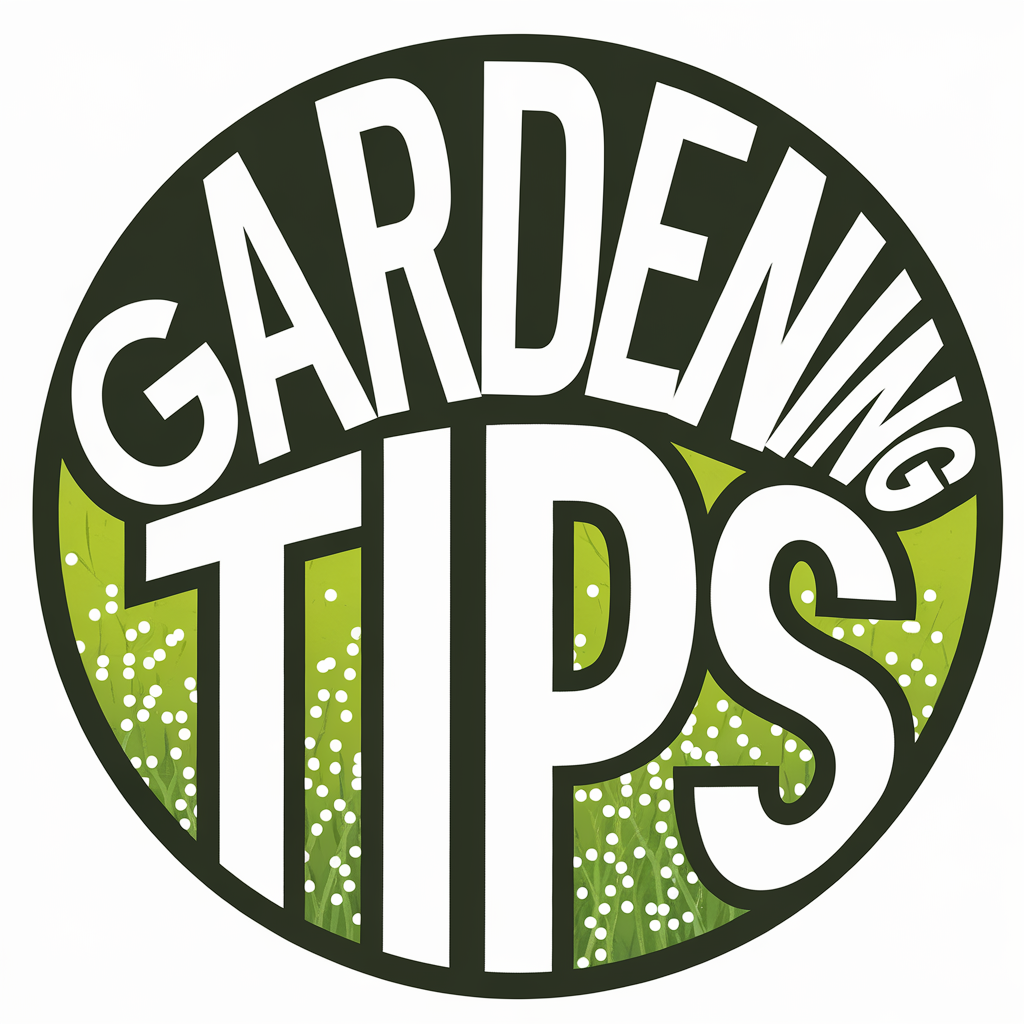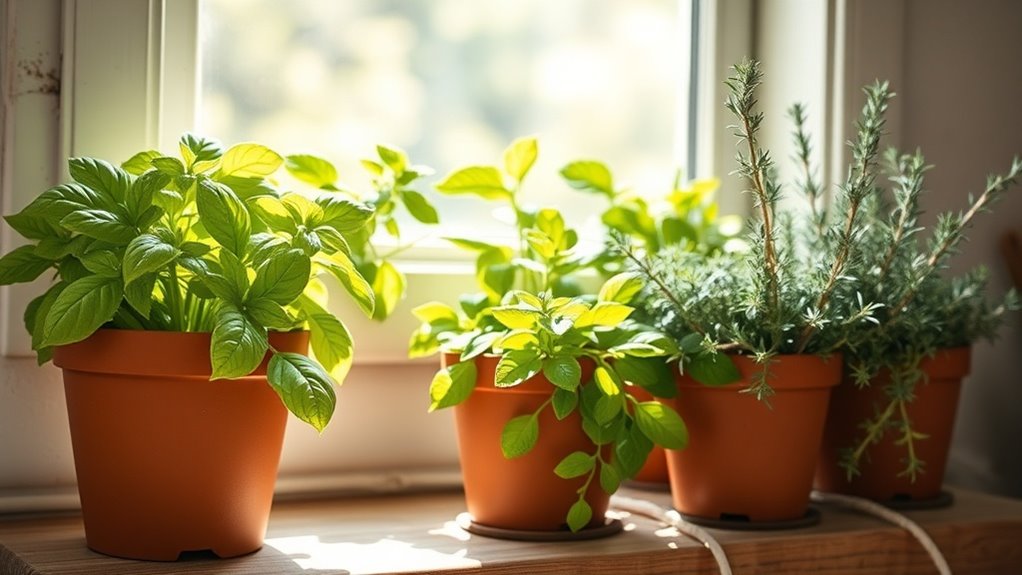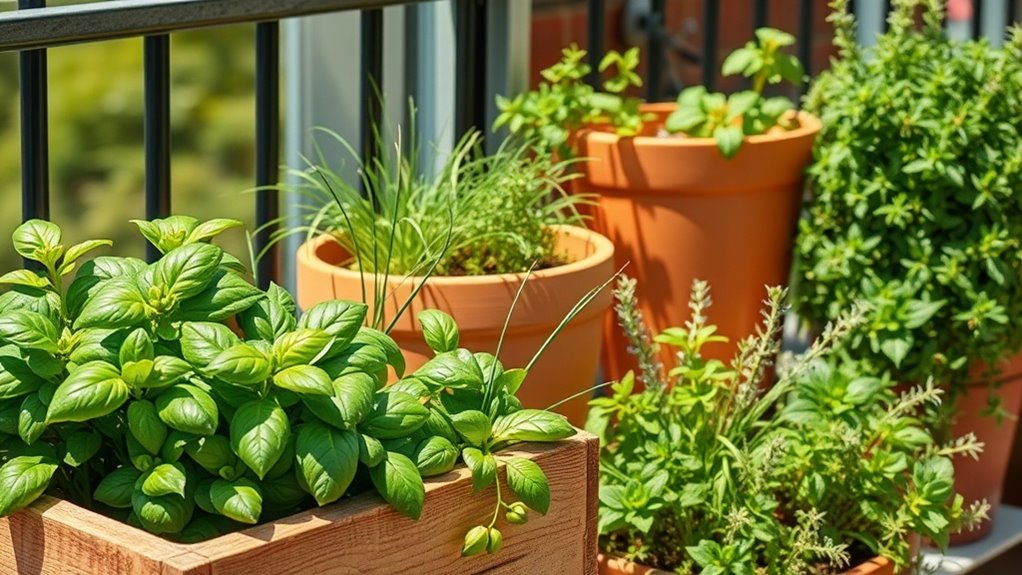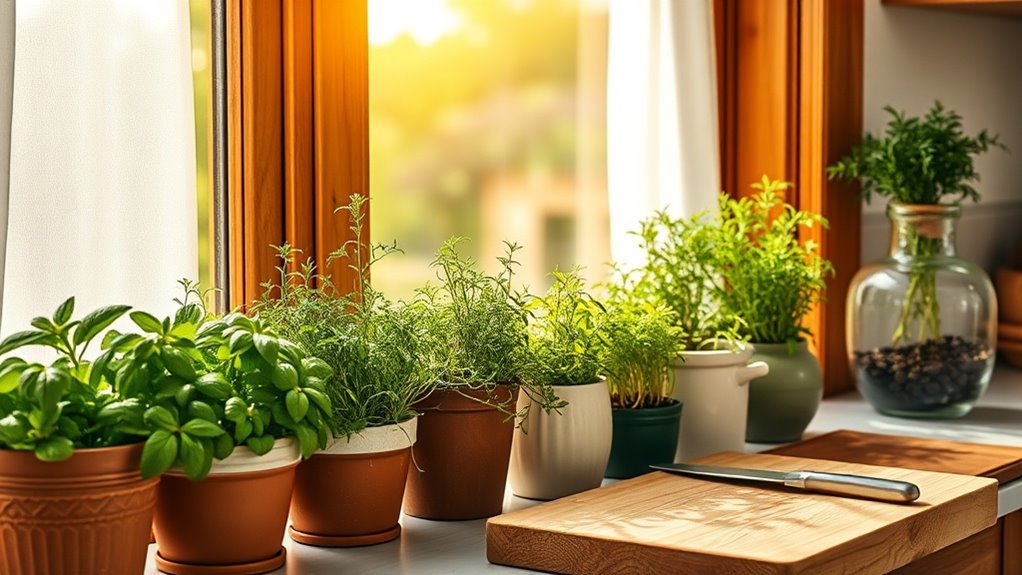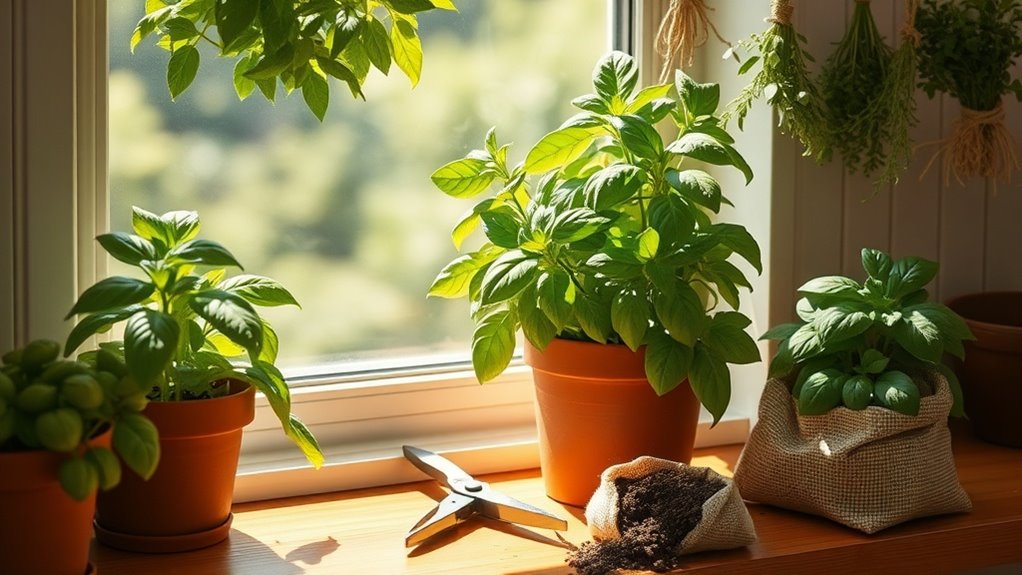How I Turned My Balcony Into a Mini Herb Farm
Did you know that growing your own herbs can reduce grocery costs by up to 30%? If you’ve got a small balcony, you can transform it into a mini herb farm with just a few essential steps. From choosing the right herbs to understanding proper care, it’s easier than you might think. Discover how you can enjoy fresh flavors and elevate your cooking right from your own outdoor space.
Selecting the Right Herbs for Your Space
How do you choose the best herbs for your balcony garden? Start by considering your climate and sunlight exposure; some herbs thrive in full sun, while others prefer partial shade.
Think about your cooking style, too. Popular choices for a balcony herb garden include basil, mint, and parsley. Additionally, selecting herbs that are known for pest resistance can help ensure healthy, flavorful herbs all season long.
Finally, check for pest resistance to ensure healthy, flavorful herbs all season long.
Essential Materials and Tools for Your Mini Farm
While setting up your mini herb farm, gathering the right materials and tools can make the process smoother and more enjoyable.
You’ll need pots or containers, quality potting soil, a watering can, and a trowel.
Don’t forget garden labels to track your herbs and a small pair of scissors for harvesting.
Having these essentials on hand sets you up for success. Additionally, consider incorporating grow fresh herbs into your indoor setup, as they can thrive year-round with proper care.
Step-by-Step Planting Process
Before you dig in, it’s essential to choose the right time for planting your herbs, as this can affect their growth and health. Start by filling your pots with quality potting soil, leaving space for the herbs’ roots. Plant seeds or seedlings at the recommended depth. Optimal planting times can greatly enhance the flavor of your culinary herbs. Water them lightly and place them in a sunny spot, ensuring they get adequate light daily.
Care and Maintenance Tips for Healthy Herbs
Once you’ve planted your herbs, keeping them healthy requires consistent care and attention. Water them when the top inch of the soil feels dry, ensure they get plenty of sunlight, and trim them regularly to promote growth. Incorporating low-maintenance herbs can significantly reduce the effort needed to maintain your garden while still yielding bountiful results.
| Task | Frequency | Notes |
|---|---|---|
| Watering | 1-2 times/week | Avoid overwatering |
| Fertilizing | Monthly | Use organic options |
| Pruning | Bi-weekly | Remove dead leaves |
| Sunlight exposure | Daily | 6 hours minimum |
Enjoying the Harvest: Recipes and Uses for Fresh Herbs
As you harvest your fresh herbs, you’ll discover a world of flavor and culinary possibilities at your fingertips. Use your herbs to elevate dishes with these ideas:
-
Basil Pesto: Blend basil with nuts, garlic, and olive oil for a fresh pasta sauce.
-
Mint Tea: Infuse boiling water with mint for a refreshing drink.
-
Rosemary Roasted Potatoes: Toss potatoes with rosemary and olive oil for a savory side.
In times of extreme heat, using organic gardening techniques can help to ensure your herbs remain vibrant and flavorful.
Enjoy your bounty!
